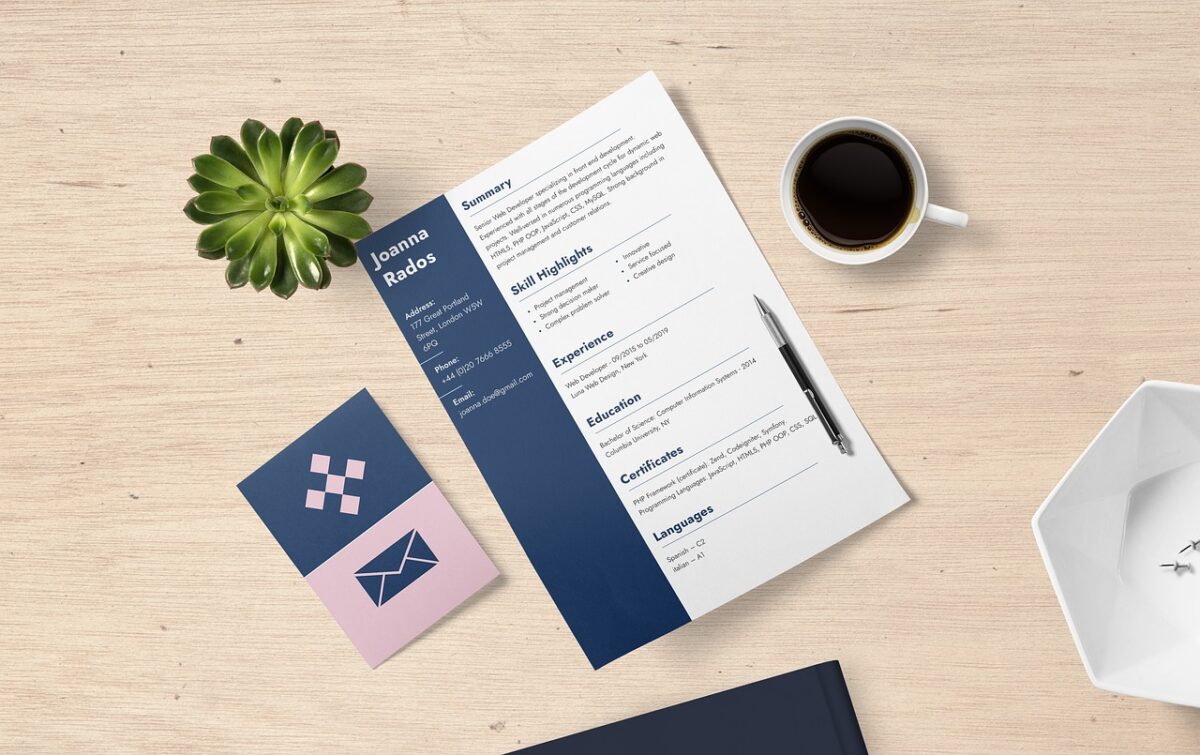How To Hire Employees

Sourcing the best staff with the right skills and experience in any economy requires managing many moving parts. The process of how to hire can be costly, and failing to hire in time or accepting a bad hire can diminish business performance and turn a positive company culture upside down.
However, it is possible to devise and deploy a direct recruitment strategy that delivers on time and within budget. You can retain control over candidate engagement and use your brand to influence their experience.
If you learn how to hire, you can harness recruitment solutions that are effective, far-reaching, and tap into resources that deliver the calibre of talent you desire. Talking of resources, you can also explore recruitment strategies further in these free how-to guides:
- How To Recruit Someone From A Competitor.
- How Do You Recruit Someone From A Different Industry?
- How To Recruit People With Transferable Skills
- How To Recruit For Niche Roles
- How To Candidates For Technical Jobs
- How To Hire Your First Employee
- How To Shortlist Job Candidates
- How To Evaluate CVs
In this hiring guide, we layout the steps to hiring employees:
- 1 Prepare Your Business For The Hiring Process
- 1.1 Build An Employer Brand Identity
- 1.2 Create A Company Careers Page
- 1.3 Conduct Research And Decision Maker Discovery
- 2 Prepare your Job Advert
- 2.1 Write A Job Description
- 2.2 Write A Job Advert
- 3 Advertise Your Job Opening
- 3.1 Introduce A Referral Scheme
- 3.2 Deploy A Social Media Hiring Strategy
- 3.3 Post Your Job On General Job Boards
- 3.4 Post Your On Niche Job Boards
- 3.5 Job Board Directory For Hiring Managers
- 4 Reduce Hiring Costs And Administration
- 4.1 Working With Recruitment Companies
- 4.2 Leverage Fixed Cost Recruitment
- 4.3 Centralise Recruitment With ATS
- 5 Define Your Interview Process
- 5.1 Create A Talent Pool And Screen Candidates
- 5.2 Conduct Structured Interviews
- 5.3 Present A Job Offer
- 6 Onboard Candidates
- 6.1 The Onboarding Process
1 Prepare Your Business For The Hiring Process

Before you begin your search for a new employee, it helps to prepare your business for the hiring process. These steps will save your company time and money and ensure you hire the ideal candidate.
1.1 Build An Employer Brand Identity
How you present your employer brand and share your story matters. Before you even know that you have a potential candidate, they are discovering your reputation as an employer.
Candidates are actively seeking employers who have values aligned with theirs. Furthermore, the top candidates have high expectations for their work-life balance, and increasingly are searching for flexibility, such as companies that embrace remote employees and hybrid working methodologies.
It will help to spend time considering the image of your employer brand and how you can aid talent as they build an impression that will sway their decision to become an applicant or not.
Five steps for creating a strong employer brand identity:
- Identify your employer value proposition
- Create an employer brand design
- Review candidate touchpoints and ensure the tone-of-voice is consistent with your employer value proposition
- Implement a mobile-first strategy
- Use social media campaigns and video to promote your employment brand
We delve deeper into how an employer brand aids hiring employees in our article Why Should SMEs Build An Employer Brand.
1.2 Create A Company Careers Page
A company website should have a careers page for job seekers. You should relay your mission, values, and history. Furthermore, for your job postings to appear on Google for Jobs and other job aggregators, each job posting should have its own page.
Whether you are hiring your first employee or your hundredth, it is worthwhile spending the time to review What Should Be On A Company Careers Page.
1.3 Conduct Research And Decision Maker Discovery
The merit and effectiveness of your hiring strategy should not be determined by applicant numbers alone. It is vital to remember that you are hiring not for your business alone but individual managers.
You need to take the time to conduct role research and decision-maker discovery and uncover the expectations of each manager or department head.
With the input from decision-makers, you can develop a hiring strategy and process that satisfies manager needs, which in turn creates an excellent candidate and onboarding experience.
Two steps of conducting successful and insightful decision maker discovery, include:
- Talking to managers individually to uncover needs and get their buy in
- Presenting to decision-makers as a group to achieve acceptance and commitment
2 Prepare your Job Advert

The next step in the new employee recruitment journey is to write a job description and job posting.
2.1 Write A Job Description
Preparedness will ensure a smooth hiring process and speed up recruitment when line managers present you with a short timescale. It is advantageous to create a job description for each role before engaging your recruitment strategy.
You will need to understand the intricacies of the role to ensure job descriptions are industry-accurate. When writing your job descriptions, you need to consider if your message is clear and attracts the most suitable candidates.
Don’t overcomplicate the description with industry jargon, ensure spacing is consistent, avoid excessive punctuation, and insert relevant keywords in the text for an SEO-friendly result.
Five steps for preparing job descriptions:
- Determine who recruits
- Identity and outline typical company-wide requirements
- Collate industry-accurate skills, qualifications, and experience with line manager input
- Research brands and competitors you admire and take inspiration from their job descriptions
- Determine who you want to recruit and how you want your brand to be perceived
We appreciate that getting started can feel like a challenge. So, we have created job description templates to help you get it right first time. We also provide expert advice on How To Define What People Do In Their Jobs, Hiring Slogans For Your Industry and Preparing Job Descriptions in these insightful articles.
2.2 Write A Job Advert
To attract a good hire you need an excellent job advert. The elements that make your job posting include:
- A statement outlining why your company is an attractive employer
- An outline of the role (position / job description)
- A list of responsibilities
- Who the employee will report to
- Qualifications, including hard and soft skills
- Job location – is the position remote or a hybrid role?
- Pay scale or salary range – top talent will be looking for higher pay, so check the average salary of a new role when determining pay, perks, and benefits
You can use a job advert template to get down the basics and fill in the more unique aspects of your company and the position.
3 Advertise Your Job Opening

Your business is now ready to investigate and deploy its job advertising strategy.
3.1 Introduce A Referral Scheme
The direct recruitment model becomes exponentially more effective when its reach is extended and directed at relevant prospects. Introducing an incentivised referral scheme turns your managers and staff into motivated recruiters, ready to share vacancies across LinkedIn or Twitter.
Your team’s social networks will include connections with like-minded professionals working in your industry and across all departments. For example, fifty employees with 100 followers and friends let you communicate with 5k potential candidates.
Two steps to introducing a referral scheme include:
- Distributing your job description to existing staff and employees
- Incentivise sharing by rewarding referrals
Explore referral schemes further by reading Introducing An Employee Referral Scheme.
3.2 Deploy A Social Media Hiring Strategy
A social media strategy is a vital component of direct recruitment, with a free opportunity to advertise jobs across LinkedIn, Twitter, and Facebook. Social networks also present the opportunity to convey a positive brand image and share your culture, influencing and attracting passive and active candidates.
Attracting and maintaining a loyal social media audience requires a regular engagement that is interesting and delivers value, including company news, updates, insightful industry articles, and expert opinions. Take the time to identify potential talent with relevant skills and watch out for availability signals, such as profile updates and requests for recommendations.
On LinkedIn, use the people search and advanced search tools and if your recruitment budget suffices, sign up for LinkedIn’s recruitment tool, Recruiter Lite.
On Twitter, use the advanced search tool to identify individuals working in your business sector. Follow, reply, and re-Tweet to build relationships before reaching out using Twitter direct messages.
On Facebook, build activity on your company page by encouraging your staff to comment and become your advocates.
Most people on social media are there to be found but don’t make your first engagement a request to apply for a job vacancy. Discover common ground and comment on their posts or in discussion threads where they have expressed their opinion.
Four steps to introducing a social media hiring strategy:
- Market yourself first with a content release timeline
- Join industry groups and networks
- Engage with respondents and nurture discussions
- Monitor your network’s activity
To read more about how to hire through social media, read Social Media Hiring Strategies For SMEs and How To Advertise A Job On Social Media.
3.3 Post Your Job On General Job Boards
If you intend to recruit at a low cost, job advertising across job boards is an essential ingredient. You can post jobs individually on single job boards or coordinate posting across all job boards with an Applicant Tracking System (ATS).
Job board resellers provide broad exposure with advertising packages and access to their ATS software, minimising hassle and significantly speeding up the posting process. The buying power of job board resellers means that costs are lower than using a recruitment agency or posting individually across general and specialist job boards.
Two steps to job advertising on job boards:
- Investigate free and paid job board
- Leverage job board resellers to save time and costs
Get a head start in reaching job candidates by reading How to Advertise a Job.
3.4 Post Your On Niche Job Boards
If you are unsure how to hire for specialist roles or difficult to fill positions, you might need to direct your attention towards niche job sites.
3.5 Job Board Directory For Hiring Managers
Top job boards where passive candidates and active job seekers might see your vacancies include:
Leading General Job Sites:
Niche Industry Job Sites:
- CW Jobs (IT)
- JobServe (IT)
- WorkingMums (Part-time)
- GAAPweb (Accounting and Finance)
- Guardian Jobs (Public Sector)
- Marketing Week (Marketing)
- Only Marketing Jobs (Marketing)
- Third Sector (Charity)
- Charity Job (Charity)
- Dezeen Jobs (Architecture, Interiors, and Design)
Aggregator Job Sites:
Geographical Job Sites:
You can advertise your job on these job boards today.
4 Reduce Hiring Costs And Administration

How to hire employees always includes careful consideration towards managing recruitment budgets, deadlines, and administration.
Choosing the best company is crucial when selecting recruitment agencies. The best-suited agency might mean selecting a national or local employment agency or a recruitment company that has job specialists. To find the best-suited agency, focus on who offers a service that most closely fits your requirements and budget.
4.1 Working With Recruitment Companies
Retained recruitment firms require payment upfront or on a schedule. They work on an exclusive basis, so only they will work on finding the right candidate.
Contingency search firms only collect their fee if they complete a successful candidate search. You can think of contingency search firms as working on a no-win, no-fee payment structure.
Staffing agency recruiters aim to reduce the time to hire and post jobs across various online channels. Candidates are typically assessed against predetermined criteria before providing the client with a list of qualified candidates.
RPO companies (Recruitment Process Outsourcing) operate as an extension of the employer’s business. The service may be permanent or deployed when the employer needs to source a hard-to-find candidate.
You can read further on agency terms, or explore the following articles:
4.2 Leverage Fixed Cost Recruitment
Fixed-cost recruitment allows you to hire at a flat fee governed by the level of service and functionality you desire.
The success of fixed-cost recruitment depends on the company offering the service, the methodologies they deploy, and their expertise and knowledge of your industry or business sector. You will need to determine which actions you need assistance with to use flat-fee recruitment successfully.
Four steps to leveraging fixed cost recruitment:
- Place ads across leading job boards
- Search CV databases and social media channels
- Headhunt and shortlist candidates
- Receive interviewed and qualified candidates
Useful resources:
- Posting On Job Boards And Leveraging Fixed Cost Recruitment
- Free Job Advertising Review
- Should I advertise My Job On More Than One Site?
4.3 Centralise Recruitment With ATS
Automatic Tracking Systems can significantly reduce hiring costs by creating efficiency. Candidate, vacancy, and job advert management fall within the software’s parameters.
Team access creates a unified place to work, helping you build a seamless hiring process and candidate experience.
Five steps to centralising recruitment with ATS:
- Reach active and online candidates
- Review candidate scores
- Distribute personalised messages to a large candidate pool
- Automate responses
- Direct candidates to application forms
To explore all the features and benefits of Automatic Tracking Systems, read Centralising Recruitment With ATS.
5 Define Your Interview Process

Selecting the best candidates for a job interview, once again, requires a little preparation.
5.1 Create A Talent Pool And Screen Candidates
A talent pool is a valuable resource and can reduce hiring times and costs by accessing individuals with validated skills and suitability. An ATS allows you to collate and process, assess, and manage all your potential candidates in one place, with straightforward tools for importing and exporting candidates.
If you are revisiting candidates generated from previous campaigns, brand networks, and referrals, handle communications carefully, with transparency at its core.
Four steps to creating a and managing a talent pool:
- Gain applicant permission to store their details
- Engage with candidates, even when you are not hiring
- Create apprenticeships and work experience schemes
- Access CV databases and collate potential matches
We explore talent pool creation further in our article Creating A Talent Pool.
To hire the right person, we recommend reviewing resumes and CVs to shortlist candidates. Indicators that your have a CV from the perfect candidate might include:
- Quantifiable evidence of the job seeker’ past achievements
- The person has steady career progression
- The person is not job-hopping
- The CV is free from spelling and grammatical errors
- The person has the relevant experience and skills to meet the job requirements
5.2 Conduct Structured Interviews
Determining the best candidate for your company will directly affect its long-term success. Focusing on your recruitment brand and candidate experience is crucial, which means facilitating intelligent interview interactions.
Developing a candidate journey that leads to an interview starts early and requires creating content that builds the desired brand perception. You should review all touchpoints that the candidate might discover or your company provides. Touchpoints include career websites, candidate packs, employee resources, and video content.
Application forms confirm candidate interest and deliver an overview of their skills, location, salary expectation, and motivation, judged on similar criteria to all other applicants.
Visit our Interviews hub for employers.
Decision-makers and hiring managers need to be prepared to deliver a consistent interview experience. Ensure that anyone who has candidate contact is on the same page and understands the brand’s vision, values and opportunities. Interviews should be challenging, supportive, engaging, and positive.
Video interviews are an increasingly popular recruitment solution, saving on resources and speeding up the hiring process. Video sharing, shortlisting, and feedback from hiring and line managers ultimately generate more successful outcomes. If you haven’t conducted a video interview before, read How To Conduct A Remote Interview.
Four steps to define the interview process:
- Review touchpoint content
- Assess candidates through your application forms
- Prepare decisions makers for interviews
- Consider video interviews
Our article Defining Your Interview Process, discusses interview questions, avoiding unconscious bias, and interviewing tips.
5.3 Present A Job Offer
The process of presenting the offer varies depending on what has occurred before. If you don’t already understand the candidate’s current earnings, expectations are better managed over the phone. Phone offers should be confident but be prepared to make changes if the individual’s circumstances have changed. Reaffirm that the candidate is happy with the offer, clarify their acceptance, and proceed to a formal written offer.
A formal offer letter can be conditional or unconditional and should include:
- Job title / position
- Candidate name
- Your conditions – i.e., this offer is made subject to…
- Official start date, time, and location
- Probationary period
- Offer terms
- Candidate actions and acceptance instructions – i.e., signed copy of job offer
- Terms and conditions of employment (issued within two months of the start date)
Employment eligibility and offer conditions might include satisfactory reference checks, passing a medical, qualification checks, criminal record checks or a background check, completing a probation period, and proving UK work eligibility. These conditions should be cleared as soon as possible so that you can make an unconditional job offer or withdraw your offer.
Probationary periods should include the notice you will give if you determine the candidate is unsuitable. If you mention training, this must be delivered, or you will breach the offer, requiring a probation period extension.
Two steps to presenting the offer:
- Prepare the offer and the best offer the company is prepared to make
- Issue the offer in writing
To further explore the topic of presenting a job offer to a job seeker, read Presenting A Job Offer.
6 Onboard Candidates

The onboarding process is a standardised method of bringing a new employee into the business, typically controlled by Human Resources. It should ensure the new hire is supported as they become part of your business and team, and begin to make a positive business impact.
6.1 The Onboarding Process
When you hire employees, your onboarding process might include:
- Creating an employer identification number
- Presenting the new hire with an employee handbook
- An office tour, introducing the person to their manager, team, and chief executives
- Informing the person of the communication methods and company software to use in the new role
- Presenting clear responsibilities and duties
- Defining new role expectations, standards, and performance indicators
- Gathering feedback from the new hire
How To Hire Tips
Here we bring our hiring tips together in their respective categories:
Building An Employer Brand Identity
- Identify your employer value proposition
- Create an employer brand design
- Review potential employee touchpoints and ensure the tone-of-voice is consistent with your employer value proposition
- Implement a mobile-first strategy
- Leverage
Decisions Maker Discover
- Talk to managers individually to uncover needs and get their buy in
- Present to decision-makers as a group to achieve acceptance and commitment
Preparing Job Descriptions
- Determine who recruits
- Identity and outline typical company-wide requirements
- Collate industry-accurate skills, qualifications, and experience with line manager input
- Research brands and competitors you admire and take inspiration from their job descriptions
- Determine who you want to recruit and how you want your brand to be perceived
- Review any previous version of job descriptions
Introducing A Referral Scheme
- Distribute your job description to existing staff
- Incentivise sharing by rewarding referrals
Social Media Hiring Strategies
- Market yourself first with a content release timeline
- Join industry groups and networks
- Engage with respondents and nurture discussions
- Monitor your network’s activity
Posting On Job Boards
- Investigate general and niche boards
- Leverage job board resellers to save time and costs
Leveraging Fixed Cost Recruitment
- Place ads across leading job boards
- Search CV databases and social media channels
- Headhunt and shortlist candidates
- Receive interviewed and qualified candidates
Centralising Recruitment With ATS
- Reach active and online candidates
- Review potential employee scores
- Distribute personalised messages to a large candidate pool
- Automate responses
- Direct candidates to application forms
Creating A Talent Pool
- Gain applicant permission to store their details
- Engage with candidates, even when you are not employing
- Create apprenticeships and work experience schemes
- Access CV databases and collate potential matches
Defining Your Interview Process
- Review touchpoint content
- Assess candidates through your application forms
- Prepare decisions makers for interviews
- Consider video interviews
Presenting An Offer
- Prepare the offer and the best offer the company is prepared to make
- Issue the offer in writing
Hiring Managers FAQs
Here we answer the questions of employers and recruiters.
Signs you might need to expand your team with new hires include:
1. A spike in customer complaints
2. Poor employee retention
3. High employee overtime costs
4. Deadlines are often extended
5. Business goals are not met / having a negative impact on performance
6. You business cannot take on new projects or clients
7. Your current employees don’t have specialised skills
8. Team meetings lack innovative thinking and you need to focus on new perspectives or inspiration
How To Hire Staff In Different Sectors
Find our recruitment guides for different sectors below:
- Recruit Accounting Staff
- Recruit Administration Staff
- Recruit Bar And Restaurant Staff
- Recruit Civil Service Staff
- Recruit Construction Staff
- Recruit Customer Services Staff
- Recruit Education Staff
- Recruit Finance Staff
- Recruit Healthcare Staff
- Recruit Hospitality Staff
- Recruit HR Staff
- Recruit IT Staff
- Recruit Management Staff
- Recruit Marketing Staff
- Recruit Professional Services Staff
- Recruit Retail Staff
- Recruit Sales Staff
- Recruit Transportation Staff
About Us
Hiring People helps small and medium-sized enterprises reduce their hiring costs and time to recruit with digital recruitment services.
We support clients by providing fixed-cost job advertising, CV and social media searches, or end-to-end solutions powered by innovative HR technology.



